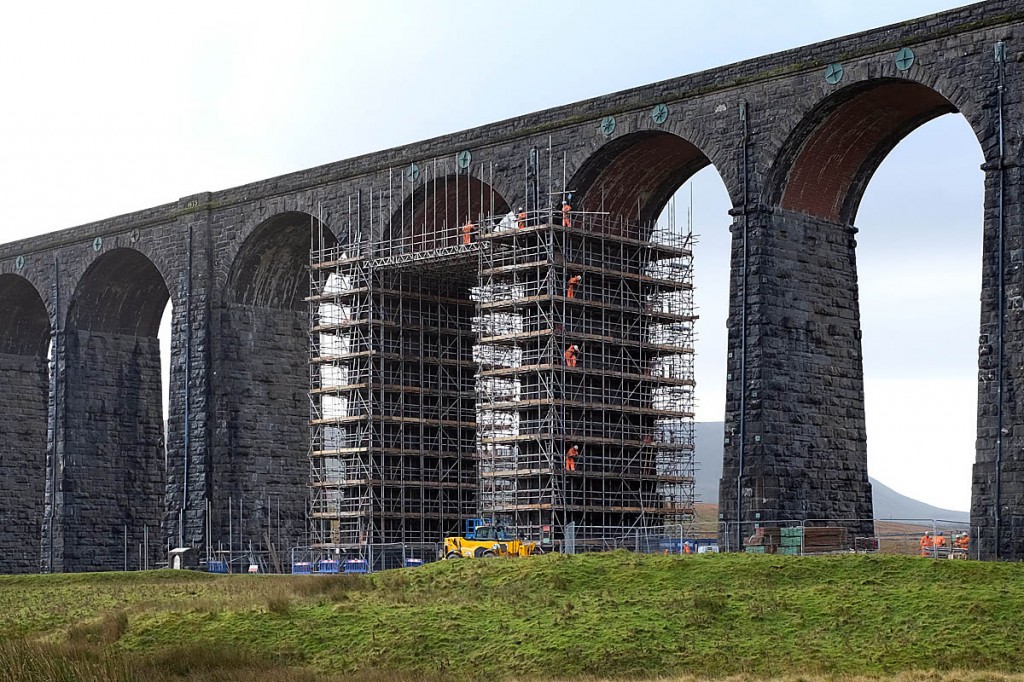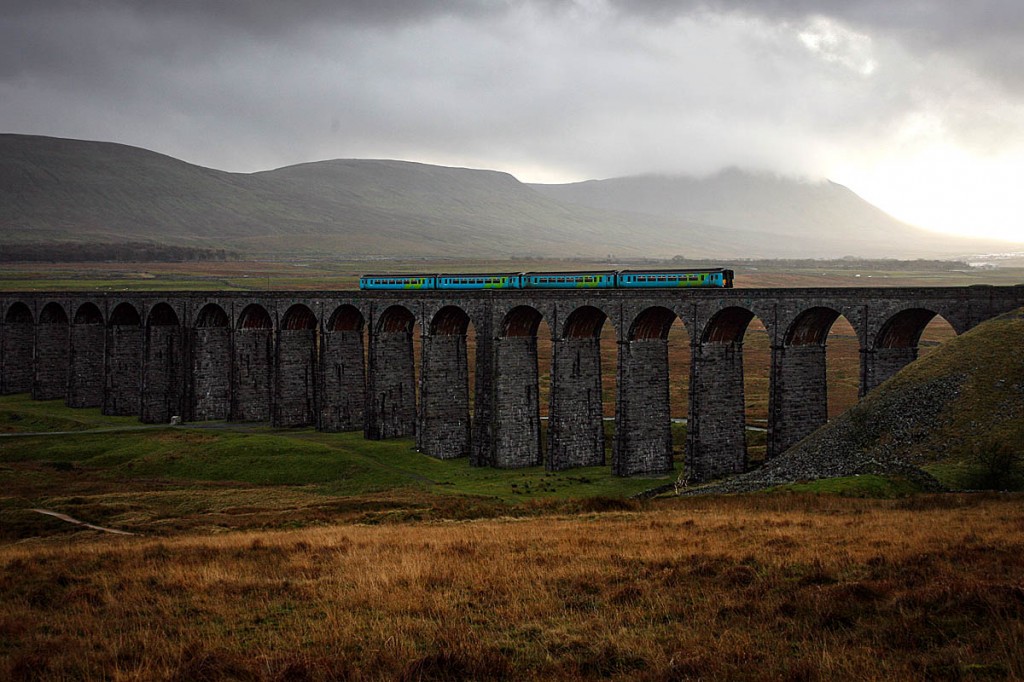Repairs will take place on a historic landmark in the Yorkshire Dales.
Network Rail has obtained listed building consent for the work on Ribblehead Viaduct.
The 400m-long, 24-arch railway bridge is a grade II*-listed structure and rises 32m above moorland on the route of the Yorkshire Three Peaks.
Its owner Network Rail said repairs to re-point the viaduct and replace broken stones will cost £2.1m. Scaffolding is currently being put up after a formal decision to grant listed-building consent for the structure, the official name of which is Batty Moss Viaduct, was made on 6 November. Work is expected to last until the end of February.
It has taken months of painstaking work to refine the plans, including laboratory analysis of ten samples of mortar from the viaduct to ensure that the mix used in the repair will be as close to the original as possible.
Member champion for development management at the Yorkshire Dales National Park Authority Jim Munday said: “If you asked anyone in England to picture a train on a viaduct, they’d probably think of Ribblehead Viaduct.
“It is a star attraction for our area, although it is but one of many superb Victorian viaducts in the Yorkshire Dales National Park; Smardale Gill Viaduct is probably in the same league and then there is Arten Gill and Dent Head.
“We’re so pleased Network Rail is investing significantly in Ribblehead Viaduct and carrying out the first major repairs since the 1990s. This was a massive application for listed building consent to deal with and I’m thankful that we’ve been able to draw on internal and external expertise to get it just right.”
Phil James, north-west route director at Network Rail, said: “It’s a privilege to look after so many significant buildings and structures across the rail network, but Ribblehead Viaduct has got to be one of the crown jewels of Victorian civil engineering.
“We know the structure is incredibly important both locally and internationally, and we want to give it the care and attention that it deserves so it can be enjoyed by future generations of passengers and sightseers.”
The viaduct carries the Settle and Carlisle Railway over Batty Wife Moss, in the shadow of Ingleborough and Whernside. The line was built in the 1870s and formed part of the Midland Railway’s route between London and Glasgow. It was threatened with closure in the 1970s but a public campaign by opponents of the plans, including keen walker Graham Nuttall and his dog Ruswarp, who signed a petition with his paw.
Mr Nuttall went missing in mid-Wales later and his body was found by rescuers who found the dog next to his owner after 11 weeks on the hills. The weakened animal died shortly after Mr Nuttall’s funeral.

